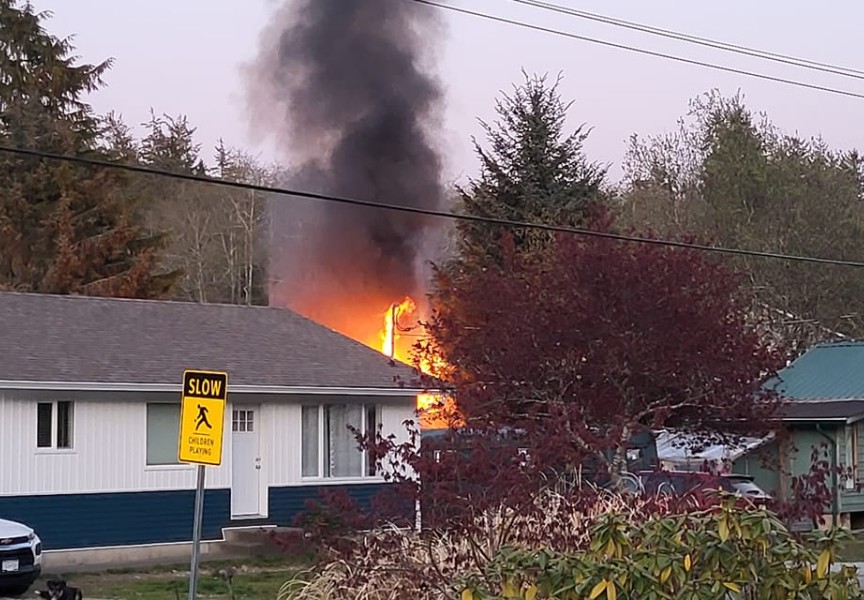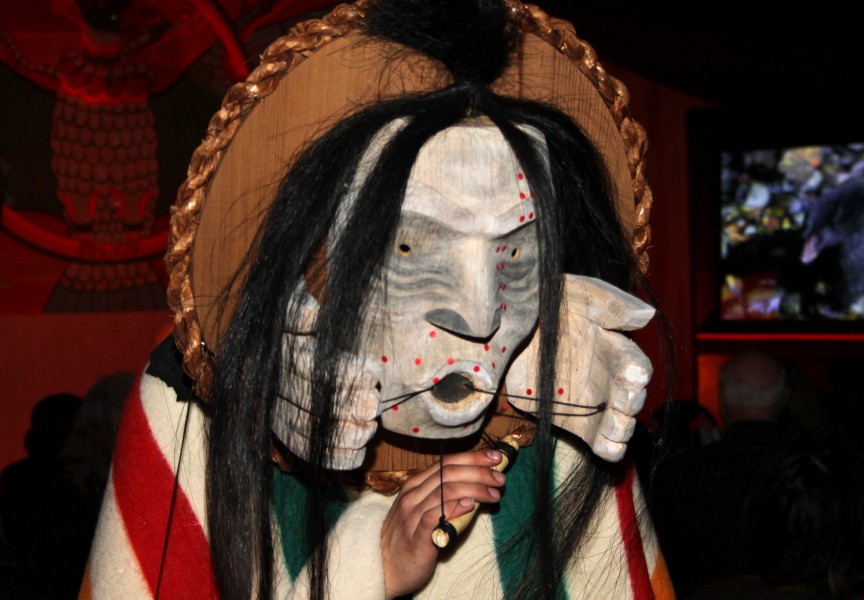Educators at haahuupaquwit, also known as EJ Dunn Middle School, have stepped up their efforts to promote Nuu-chah-nulth language and culture with a regular morning welcome announcement performed by students.
On Feb. 23, the task was assigned to Arianna Ward, Jenna Sawyer, Elsie Harris, Mali Poher and Tseshaht member Jasmine Gomez, who coordinates the Nuu-chah-nulth language component of the daily welcome.
“I've been doing this since the beginning of the year,” Gomez said, adding that the task has encouraged her to work on her language and culture. “I attend meetings with my dad [John Gomez] and we work together on books. On Wednesdays, I dance at [Tseshaht Cultural Centre].”
Geraldine De Konick and Caroline Thompson are the Nuu-chah-nulth Education Workers at haahuupaquwit. De Konick, who is of Coast Salish background, said volunteer students work on a rotation, and non-aboriginal students are encouraged to take part in the Nuu-chah-nulth language greeting.
“We do the acknowledgement of the [Tseshaht and Hupacasath] territories and a trivia contest,” she said “We do struggle a bit because we don’t have a fluent speaker here.”
“I can only go so far with what I can teach. I am still studying the language on an ongoing basis,” said Thompson, who is a member of Tseshaht First Nation.
The Monday morning announcement also includes a Virtue of the Week. This week it’s Tolerance. This week’s trivia question is ‘What year was the territory of Nunavut formed?’
Haahuupaquwit vice principal James Messenger explained students are invited to write their answer and drop it into a draw box in Room 801, which serves as the support room during the lunch hour.
“It is for all students, but it is staffed by our Nuu-chah-nulth Education Workers as well as one of our First Nations teachers,” he said. “By bringing the trivia draw box here, we are trying to get some traffic through.”
Messenger said by making the support room a place for fun and enjoyment, it increases the opportunities for students to reach out for help or support when they are having difficulties with their education or with life and family.
The announcement program actually came about as a result of cost-saving measures undertaken by School District 70, Messenger explained.
“This year, the school district moved to a two-week Spring Break. So, in order to make up for the lost instruction time, each school day was increased by seven minutes.”
Some schools elected to distribute those extra few minutes between the regular classes. Messenger said staff at haahuupaquwit elected to use that short extra block of time to set the tone for the day. And recognition of Nuu-chah-nulth culture has become an important mandate for the school.
“At our assemblies, we start off with O Canada, and as a nation we talk about being bilingual, with French and English. Well, now, as a school, we are recognizing the traditional territory and the traditions of our Nuu-chah-nulth people.”
Messenger said the “buy-in” from non-aboriginal staff and students has been complete.
Thompson said she is a member of the first generation of local students to receive cultural education in school. She first attended Eighth Avenue Elementary, then Redford, EJ Dunn and ADSS.
“The Nuu-chah-nulth Education Workers were first placed in the schools in 1988, which was my first year in school. They’ve been in each of the schools I have gone to. I’ve made connections with them, and now they’re my co-workers.”
Thompson said the Nuu-chah-nulth Education Workers consciously deal with the legacy of the residential school system, in an effort to overcome some of the residual damage.
“There is a consciousness about it and an awareness of how we need to support our students because they are inter-generational: their parents, their grandparents and aunts and uncles may have gone. There are still legacy effects going on. So, knowing where they are coming from and doing our best to support them academically here at the school, socially and emotionally – that’s part of being a Nuu-chah-nulth Education Worker.”
At haahuupaquwit, all Grade 6 students attend 18 sessions of Aboriginal Culture during the course of the year. Thompson said students learn about the residential school system as part of the curriculum.
“The Alberni Valley Museum recently had the exhibit of residential school art. We had a Grade 6 class go there and meet four survivors, and talk about their paintings and a little bit about their experience.”
Messenger said the goal at haahuupaquwit is to help both aboriginal and non-aboriginal students connect with Nuu-chah-nulth culture, and to carry that consciousness with them through life. That’s why each day starts with a welcoming.
“This is a small gesture that is going in the right direction,” he said.






